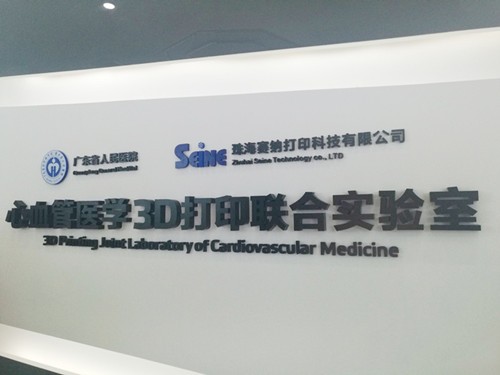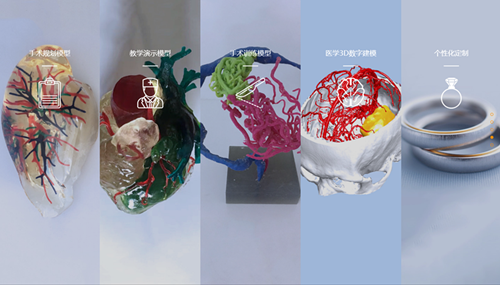China's first cardiovascular medicine 3D printing medical research enterprise settled in Guangdong
Guangdong Provincial People's Hospital, Guangdong Institute of Cardiovascular Diseases and Zhuhai Saina Printing Technology established the first joint laboratory of 3D printing medical research enterprises in China. The laboratory was established to promote the clinical application, scientific research and localization of 3D printing equipment and materials for cardiovascular medicine 3D printing technology. The immediate goal is to help preoperative diagnosis, intraoperative "navigation" and postoperative evaluation, and cardiovascular hemodynamics research and clinical application with models and modeling by means of 3D printed anatomical models. The medium-term goal is to customize the printed human body. Implantable biological or non-biological grafts, the long-term goal is to create a "artificial heart" for transplantation by combining cell culture techniques. 3D printing technology has a wide range of applications in the cardiovascular field, not only in complex congenital heart disease, but also in valvular diseases, macrovascular diseases, heart transplantation, arrhythmia and other aspects. So far, many medical education institutions in Europe and the United States have applied the 3D printing model of structural heart disease to clinical teaching and achieved remarkable results. At present, about 6.7 million patients with structural heart disease in China need surgery. The individual lesions of the disease are large, the treatment plan is complex and variable, and the operation is difficult. Preoperative 3D prints a 1:1 solid model for surgeons to simulate operations, pinpoint the key steps of the procedure, develop the best surgical plan, greatly improve the effectiveness and safety of the operation, and train different doctors to operate the same disease. Homogenization. The Provincial Medical Research Institute is China's leading cardiovascular disease prevention and control center, and it is also the only WHO World Health Organization Cardiovascular Research and Training Cooperation Center. The congenital heart disease team led by Prof. Zhuang Jian, the dean of the hospital, has established the Guangdong Congenital Heart Disease Prevention and Control Network in China since 2004. For many years, he has been exploring the frontiers of congenital heart disease prevention and research. The first fetal heart surgery, in September 2016, launched the nation's first intrauterine interventional surgery for fetal heart disease, filling a number of gaps in China. In April this year, the Provincial Medical Research Institute and Zhuhai Senna Printing Technology Co., Ltd. held a signing ceremony for cardiovascular 3D printing cooperation. As of press time, the partners have made a lot of attempts in image modeling, multi-color printing, printing ink materials and improving the accuracy of the model. The Provincial Medical Research Institute has printed cardiovascular models for 28 patients. With the 3D model, in the extremely complex congenital heart disease such as pulmonary atresia, complete transposition of the great arteries, right ventricle double outlet, aortic coarctation or disconnection, vascular ring, coronary artery abnormalities, permanent arterial trunk, etc. Surgery was performed, the operation time was greatly shortened, and the operation was good.
Fresh golden crown pears ripen from July to August and are refrigerated from November to may next year.The pear is delicious, crisp and juicy, sweet and sour, and fragrant.Rich in sugar, protein, fat, carbohydrate and a variety of vitamins, to human health has an important role.Pears have the function of clearing the lung and nourishing the lung.Golden crown pears are very delicious and we offer the best quality for our customers. Please let us know if you need any.
Golden Crown Pear,Fresh Fruit Golden Crown Pear,Fruit Golden Crown Pear,Sweet Golden Crown Pear Jining Sunagro Trade Co., Ltd. , https://www.sunagro-food.com

